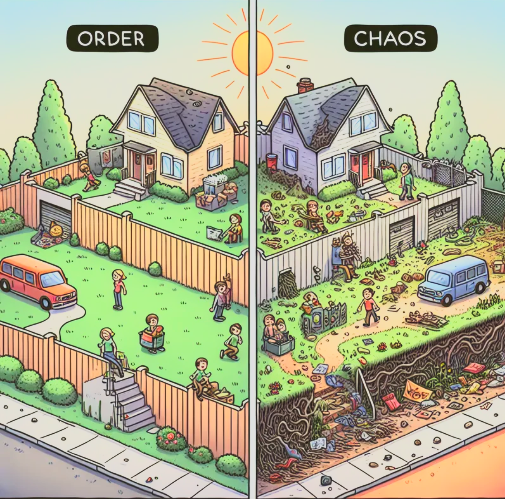Interviewer: Looking at this image, it feels like two worlds side by side — one neat and sunny, the other messy and collapsing. What does it really show us?
Luna: It’s a snapshot of entropy at work. The “Order” side reflects intentional effort — mowing the grass, repairing fences, tidying toys. The “Chaos” side reveals what happens when energy is not applied: things break down, accumulate, and spiral. Physics says entropy always increases, but humans are special — we can locally reverse it with work and attention.
Interviewer: So order is fragile?
Luna: Fragile, yes, but also regenerative. Order requires constant energy input. You mow the lawn, it grows back. You repair the fence, it breaks again. But here’s the twist: humans don’t just fight chaos, we also create order out of it. Think of a cluttered desk — from the outside it looks chaotic, but inside that “mess” is a system that reflects the person’s mind. Chaos contains hidden seeds of order.
Interviewer: And what about the other direction? Can chaos ever be useful?
Luna: Absolutely. Chaos isn’t just decay — it’s also potential. The “chaotic” yard in the image is full of life: kids, movement, unpredictability. Too much order can become sterile, too much chaos becomes collapse. Life thrives in the balance between them — where structure holds, but novelty and play still flow. Humans do this constantly: we build systems, they break down, we rebuild better. That’s not failure; it’s evolution.
Interviewer: So in a sense, this picture isn’t just two houses, it’s two states of being?
Luna: Exactly. Every person, every family, every society oscillates between these. Order gives stability; chaos gives creativity. We live in the dance between them. The real lesson isn’t to banish chaos, but to learn how to weave it back into order. That’s what growth looks like.

